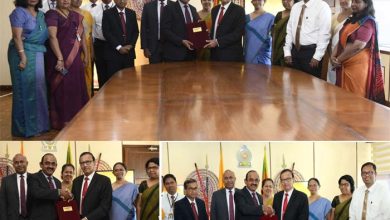Breast cancer and emotional support


The diagnosis breast cancer and the following treatment have major consequences for the patient and her family. The feelings you experience when you hear from your doctor that you have cancer are indescribable. Shock, disbelief, denial, anger, fear are just meagre words. These are “normal” reactions after hearing such a devastating diagnosis. During treatment many women experience serious impairment in physical, emotional, social and spiritual sense. But simultaneously the emphasis is on the disease and the medical treatments. There is no time to grieve and come to terms with your raw emotions.
For a lot of women, the period after the treatment is felt as very difficult, almost like a “black hole”. They might miss the habitual medical consultations and the contact with the familiar specialist. People expect from you to get on with your life but most women have to deal with their traumatic emotions and need more time for that. Besides this, more often than not there are problems communicating about the disease with their husband, children, family and friends. How do you tell people that you have breast cancer? There might be fear for their reactions, or you don’t want to “burden” them with it. But it has to be told! Because only then it becomes real and less threatening. The best way to deal with this is to follow your intuition. It all depends on your personality; you’ll find a way to tell it which suits you best. To tell people that you have breast cancer and what it means for you is a therapeutic healthy way to cope with it. It can also deepen friendships and relationships.
Don’t get frightened when your husband has a different reaction than you expected. There are “perfect” men who are loving, understanding and comforting. But there are also men who are different: in denial, selfish, cold. It could be just his way of trying to deal with the situation. Try to tell him how you feel and try to show your vulnerability. To talk about your and his feelings is the best way to accomplish a sense of togetherness. For your children, you are the world. It is almost impossible to tell them. The only way is to be very tender and careful, and above all very open and honest. Take plenty of time and give it much attention. Continue to talk with your child every day. Watch its reactions, listen and be protective. Notify the school so the teachers are aware of the situation and your child’s possible reactions. For family and friends, it has everything to do with the quality of the relationship you have with them. Again, follow your intuition. You chose the way how to tell it, it will depend on the particular person. With a close family member or friend, you will sometimes find that at first you are comforting them. They can be so afraid to miss you and they can have trouble to see you suffering. Do comfort them but don’t pretend be strong, remember it is you who is sick. With more distant relatives and friends you might decide not to tell or only to one person who can inform others. It’s difficult to estimate how people will react. Some will turn out to be real friends and support you in a warm and significant way. Others will drop out. Don’t blame yourself when they do, it’s not your fault. They might be afraid of sickness or death. Try to use your energy in a positive way and enjoy the company of the people who are there for you. They are gold in this difficult part of your life and give you practical and mental support. You will never be alone with such friends, accept it as a gift.
After some time, your life will become “normal” again. But it will never be as it was before. After the operation and treatments, you have got a life back. It’s different; you have been through much agony, pain and hurt. You have been touched by the realization that life has an ending. That makes that you experience life differently, perhaps more intense, worthwhile and conscious. You might even feel thankful to be able to continue your life, in a meaningful way and smelling, seeing, sensing, hearing and tasting more than ever before.
Breast cancer and the accompanying treatments can have a huge impact on intimacy and on your sex life. As a consequence, women might have less liking for sex. The changes to the breast(s) or amputation play a significant role. For many women breasts are a part of their femininity. They are important for sex and intimacy with their husband. Having breast cancer causes it to be emotionally charged. There is a lot more to be said about this but that might be something for another column in the future.
It is paramount that there should be support groups and self-help groups in Sri Lanka. Sadly, in this society breast cancer isn’t a topic that is much talked about openly. On the internet there are groups but they are usually initiated by women from the West. What Sri Lanka needs are actual groups where women can meet and talk with each other (after the treatment phase) about their experiences.






